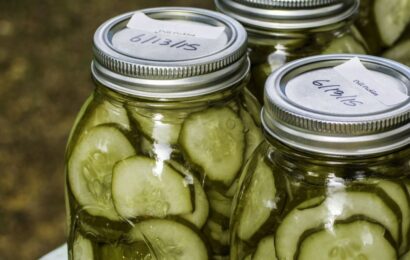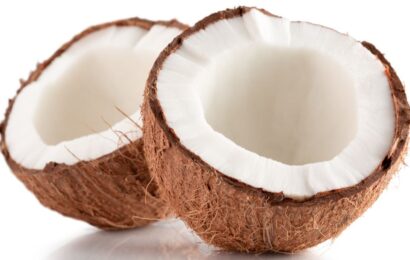The holidays are upon us, and if you’re like many people, you might be getting ready to do some serious holiday baking. But if you have diabetes, what is the best sweetener to use in your baking? And can you bake with sugar if you have diabetes? Read on to find out!
Types of sweeteners
When it comes to sweeteners, you have a lot of options to choose from. Nutritive sweeteners, which contain calories and carbohydrates, include:
- Sugar
- Brown sugar
- Coconut sugar
- Honey
- Molasses
- Corn syrup
- Maple syrup
- Agave syrup
- Sugar alcohols
Nonnutritive sweeteners have virtually no calories or carbs, and these include:
- Aspartame
- Sucralose
- Allulose
- Stevia extract
- Monkfruit extract
While it might seem like nonnutritive sweeteners are an ideal choice for baking, some may work better than others in terms of holding up to high oven temperatures.
To get cutting-edge diabetes news, strategies for blood glucose management, nutrition tips, healthy recipes, and more delivered straight to your inbox, sign up for our free newsletters!
Nutritive sweeteners and baking
When it comes to baked goods, such as cookies, cakes, brownies, and pies, you can’t beat sugar for flavor, volume, texture, moistness, and browning. Sugar also acts as a preservative. You might wonder if more “natural” sugar sweeteners, such as honey or maple syrup, are any better if you have diabetes. Unfortunately, they’re really no different than table sugar in terms of calories and carbs.
What about agave syrup or coconut sugar? Agave syrup is not a lot different than regular table sugar when it comes to calories and carbs. For example, a teaspoon of agave syrup has 20 calories and 5 grams of carb, while a teaspoon of sugar has 16 calories and 4 grams of carb. And even though agave syrup is touted as being “natural,” it’s still a processed sweetener. It’s true that agave syrup has a lower glycemic index, but it contains both fructose and glucose, which makes it more likely to lead to insulin resistance and, in large doses, more likely to affect the liver.
As far as coconut sugar goes, this too is not much different than sugar. It’s believed to cause less of a blood sugar spike, but the calories and carbs are about the same as regular sugar.
Tips for baking with nutritive sweeteners
- If you choose to bake with any nutritive sweetener, try cutting back on the amount that you use by 1/4 to 1/3. This amount is unlikely to affect the final product.
- Go easy with your portions of any sweet treats; you might decide to swap out another carb food, such as a potato, rice, or pasta at a meal in order to enjoy a holiday favorite baked with sugar.
- Plan to do some physical activity, such as going for a walk, after eating a baked goodie to help keep your blood sugar from going too high.
Baking with sugar alcohols
Some sweeteners contain sugar alcohols, such as xylitol or erythritol. Sugar alcohols have about half of the calories and carbs as regular sugar. They can be used in baking, but keep in mind the following:
- Products made with sugar alcohols still have calories and carbs.
- Eating too much of foods made with sugar alcohols made lead to some digestive “distress,” including bloating, cramps, gas, and diarrhea.
- Erythritol can lead to a “cooling effect” in baked goods. This cooling effect is much like sucking on a mint and feeling that cooling sensation.
Nonnutritive sweeteners and baking
If you’re looking to slash calories and carbs in your baked goods, consider using a nonnutritive sweetener. But which one?
Aspartame
It’s best to avoid using aspartame (brand names Equal and NutraSweet), as this sweetener can break down at high temperatures.
Sucralose
Sucralose (brand name Splenda) is an option. It looks and tastes like real sugar, and it holds up to high temperatures. Sucralose is 600 times sweeter than regular sugar, so you may need to experiment with the amount that works best for you.
Stevia
Stevia extracts (brand names Truvia, PureVia) are also a good choice. They are about 200 to 350 times sweeter than regular sugar and are stable at high temperatures. You may need to increase the liquid ingredients in your recipe when using stevia extract.
Monkfruit
Monkfruit extract is derived from the monk fruit and is 150 to 200 times sweeter than sugar. Some people notice more of an aftertaste with this sweetener. You also need to make sure to have liquid ingredients in your recipe to help dissolve the monkfruit extract. Additionally, note that some manufacturers add erythritol to monkfruit extract to lessen the intensity of the sweetness.
Allulose
Allulose is a newer sweetener, and this is derived from raisins, figs, and maple syrup. It’s only about 70% as sweet as sugar, so you may find you need to use more in recipes to reach your desired sweetness. Some people notice that it can give them bloating and gassiness.
Sugar blends
Baked goods made with nonnutritive sweeteners may look, feel, and taste different than those made with sugar. If you’re not satisfied with the outcome, consider baking with a sugar blend. This is a combination of sugar and a nonnutritive sweetener such as white or brown sugar. You get the benefits of sugar (volume, texture, moistness) with fewer calories and carbs.
Whichever sweetener you choose to bake with, remember that your delectable fruitcake or holiday cookies will still contain calories and carbs from ingredients such as flour, cornmeal, milk, fruit, and chocolate chips.
Learn how various sweeteners affect your blood sugar by checking your blood sugar with your meter before and two hours after you eat. And if you happen to overindulge a bit, remember that tomorrow is another day to get back on track!
Want to learn more about sweeteners for baking? Read “Baking and Cooking With Sugar Substitutes.”





